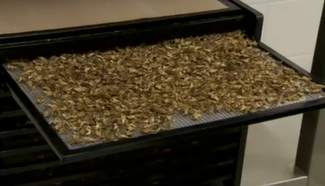SAN FRANCISCO, March 2 (Xinhua) -- A new study suggests that fructose, a sugar found in honey, fruits and vegetables, makes a type of molecular treatment for Duchenne muscular dystrophy more effective.
Often known as a villain for its role in causing obesity-related health problems, fructose was looked at by Hong Moulton of the Oregon State University (OSU) College of Veterinary Medicine and her colleagues for its ability to enhance the uptake and activity of antisense oligonucleotides, or AOs.
Therapy with AOs, a group of synthetic single stranded strings of nucleic acids, aims to restore production of dystrophin, a protein that is key to Duchenne muscular dystrophy, but efficiently delivering the molecules to the muscle cells has been a challenge. Characterized by progressive muscle degeneration and weakness, Duchenne is caused by the absence of dystrophin, that helps keep muscles intact.
Duchenne primarily affects males, and about one boy in 3,500 will be born with it. Symptoms usually appear around age 4, first affecting the shoulders, upper arms, hips and thighs. Patients have a hard time rising from the floor, climbing stairs, keeping their balance and raising their arms. Most die in their 30s when their cardiac and respiratory systems fail.
Moulton's research involved dystrophin-deficient rodents known as mdx mice. Findings suggest that when fructose is administered along with a type of AO known as a phosphorodiamidate morpholino oligomer, or PMO, the AO gets into muscle cells four times better, resulting in more production of dystrophin and better recovery of some muscle use.
In addition, fructose enhanced delivery of a PMO conjugated to a cell-penetrating peptide, a molecule known as a PPMO.
Compared with other delivery technologies, fructose has low toxicity, making it both safe and efficient, according to the study published in the journal Molecular Therapy - Nucleic Acids. And no weight gain or any abnormal behavior was observed in the mice.
"We don't yet understand the mechanism," Moulton was quoted as saying in a news release from OSU on Thursday. "Maybe it's that the fructose is an energy source that enhances uptake, because uptake in muscle cells requires energy. But right now the mechanism is unknown."
The findings were results of an international collaboration involving Moulton, Haifang Yin's research group at China's Tianjin Medical University and researchers at Singapore's Agency for Science Technology and Research.












